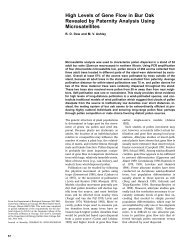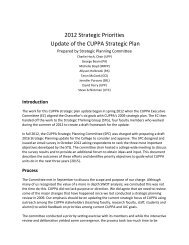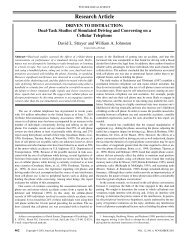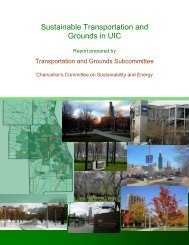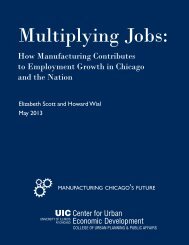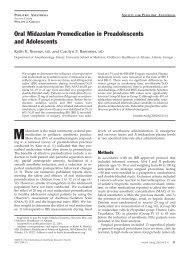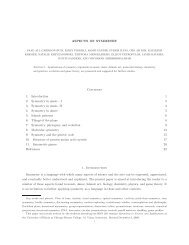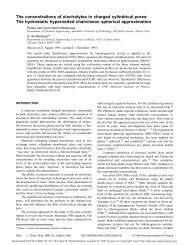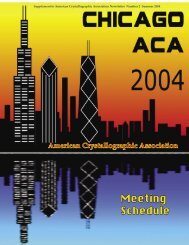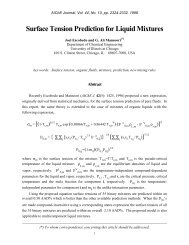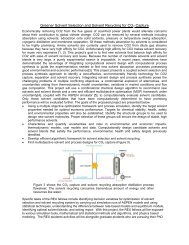Structure & Properties of Micelles and Micelle Coacervates of ...
Structure & Properties of Micelles and Micelle Coacervates of ...
Structure & Properties of Micelles and Micelle Coacervates of ...
Create successful ePaper yourself
Turn your PDF publications into a flip-book with our unique Google optimized e-Paper software.
Whether the asphaltene particles are dissolved in petroleum, in steric-colloidal state or in micellar form,<br />
depends, to a large extent, on the presence <strong>of</strong> other particles (paraffins, aromatics, resins, etc.) in the petroleum. The<br />
existence <strong>of</strong> various nano-structures <strong>of</strong> asphaltenes in petroleum has been extensively discussed in numerous<br />
publications (Mansoori, 1997, Rogacheva et al 1980, Sachanen 1945, Sheu <strong>and</strong> Mullins 1995, Yen <strong>and</strong><br />
Chillingarian, 1994).<br />
A number <strong>of</strong> physical <strong>and</strong> chemical methods are available for construction <strong>of</strong> model structures for<br />
asphaltenes. Physical methods include IR, NMR, ESR, mass spectrometry, x-ray, ultra centrifugation, electron<br />
microscopy, small angle neutron scattering, small angle x-ray scattering, quasi elastic light scattering spectroscopy,<br />
VPO, GPC, etc. Chemical methods involve oxidation, hydrogenation, etc. Two <strong>of</strong> the representative structures for<br />
the asphaltene molecule belongs to the the Atabasca tar-s<strong>and</strong> bitumen <strong>and</strong> petroleum bitumens (Suzuki, et al 1982)<br />
<strong>and</strong> includes carbon, hydrogen, oxygen, nitrogen, sulphur as well as polar <strong>and</strong> non-polar groups as it is shown by<br />
Figure 1.<br />
Figure 1<br />
It has been recognized that petroleum asphaltene may form micellar particles in aromatic <strong>and</strong>/or polar<br />
solvents such as toluene <strong>and</strong> methyl-naphtalene (Galtsev1995, Mansoori, 1997, Rogacheva et al 1980, Sachanen<br />
1945, Sheu <strong>and</strong> Mullins 1995, Yen <strong>and</strong> Chilingarian, 1994). Small-size asphaltene particles may be dissolved in a<br />
petroleum fluid, whereas relatively large asphaltene particles may flocculate out <strong>of</strong> the solution, due to high paraffin<br />
content <strong>of</strong> the oil, forming r<strong>and</strong>om aggregates as shown in Figure 2.<br />
Figure 2<br />
Flocculation <strong>of</strong> asphaltene in paraffinic petroleum are known to be irreversible, having hysterises when the<br />
conditions are returned to pre-floculation point (Abedi et al 1998, Acevedo et al 1995, Birket 1997, Fuhr et al 1991).<br />
Due to their large size <strong>and</strong> their adsorption affinity to solid surfaces asphaltene flocs (r<strong>and</strong>om aggregates) can cause<br />
4



